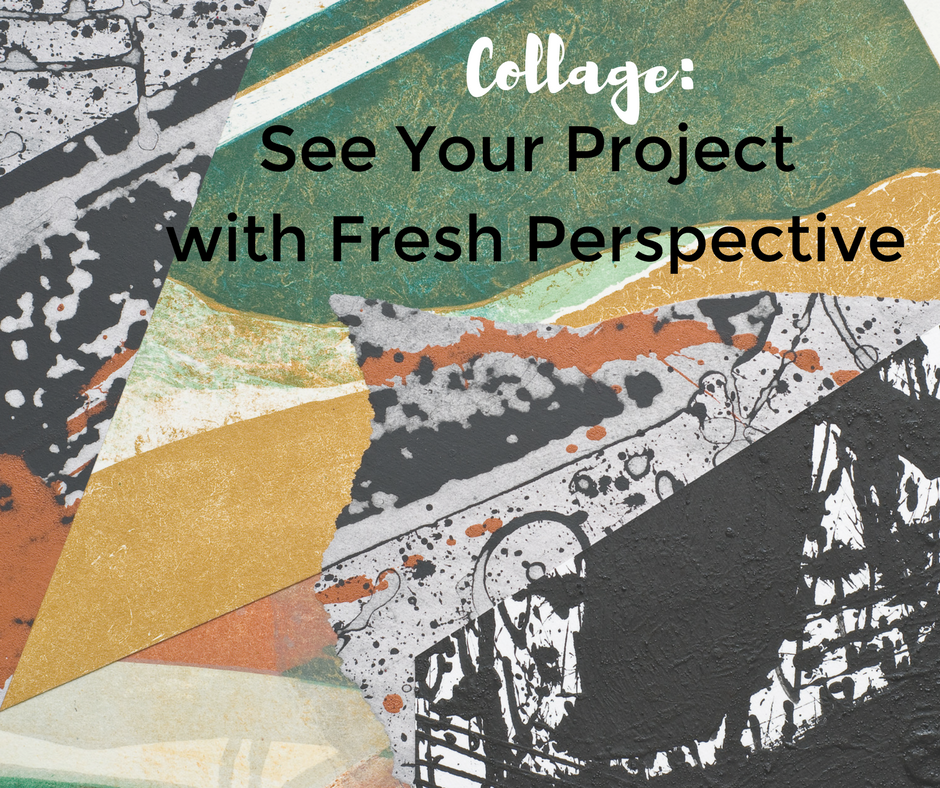by Naomi | Mar 27, 2017 | Creative Life
Creativity often shows up at the intersection of various thoughts. Here are three about following your curiosity … where do they lead you?
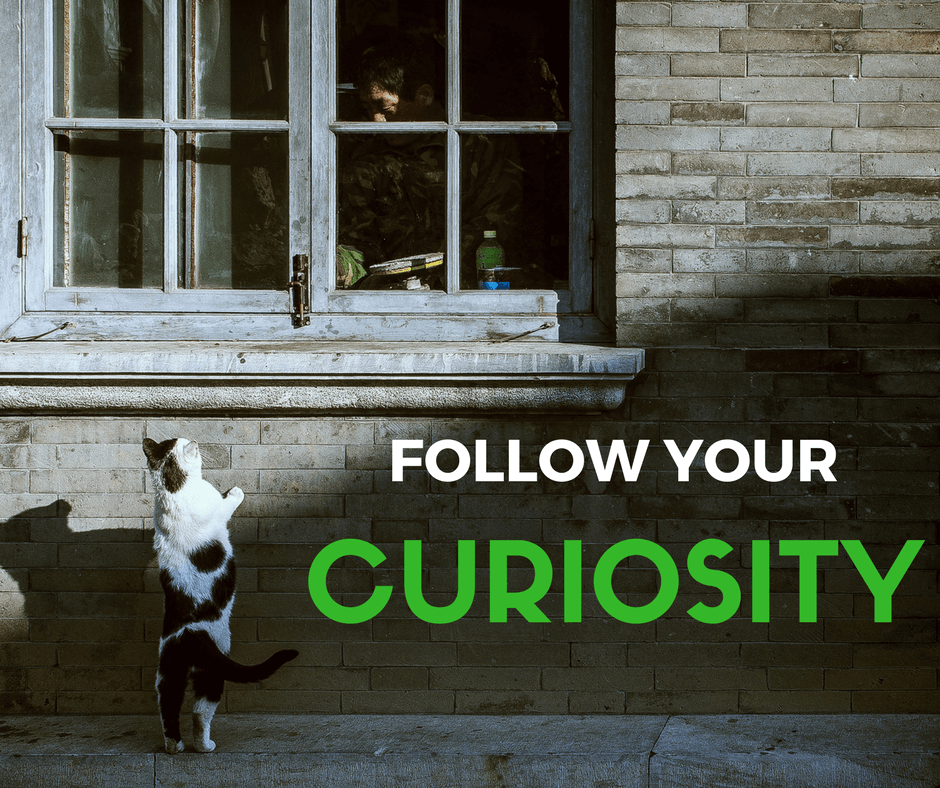
“We have to continually be jumping off cliffs and developing our wings on the way down.”
― Kurt Vonnegut
“The real voyage of discovery consists not in seeking new landscapes, but in having new eyes.”
― Marcel Proust
“People never learn anything by being told, they have to find out for themselves.”
― Paulo Coelho
Feeling inspired, but want more? Explore more quotes (and images) on curiosity on this Pinterest board.
by Naomi | Mar 23, 2017 | Creative Life

You’ve probably heard at least one of these truths:
- Violent behavior is reduced when a person has the vocabulary to describe his or her emotional experience.
- Goals are more likely to be achieved simply because we have written them down.
- Journaling leads to resilience and stronger emotional health.
Each of these claims is backed by research. For instance, this study explores how a stronger, more expressive vocabulary tends to reduce aggressive behavior in toddlers. In general, the trend continues as children age.
If language helps us interact positively, achieve our goals, and live a healthy life, it’s clearly a powerful tool. Words seem so innocuous, though. They’re part of our daily life–a part we largely take for granted. What would happen if we paid just 10% more attention to our language?
Language to Make Us More Effective
What if, for instance, we thought mindfully about the words we put into an email? In his book, Deep Work, Cal Newport notes the difference between a tossed-together email and a more thoughtful one. Consider the difference between these two hypothetical responses:
Hey Peter,
Sure, I’d be happy to get together to discuss that idea we talked about at the conference. Let’s schedule a coffee.
OR
Hey Peter,
Sure, let’s discuss. I suggest:
- We each summarize our thoughts and bring our notes to our meeting. Let’s make sure to capture ideas on the audience, the approach and the team.
- We meet, outline a plan for our proposal, and set action steps.
- We aim to send the proposal out by the end of the month.
What do you say we meet at Convergent Coffee next Wed. 11 am? If that time doesn’t work for you, feel free to suggest another couple times that do.
Language to Help Us Connect
Or, on the opposite end of the emotional spectrum, what if we spent a few extra moments considering a compliment to a friend? Our first impulse might be:
Yummy dinner! Thanks.
But what if we said:
The spice of the jalapeño combined with the sweetness of the pineapple made your rice extra special. Thanks for putting time and creativity into our meal!
Why Consider Our Words?
Words are free, but taking the time to use them well requires extra thought. That extra thought is well worth the effort if it helps you strengthen a friendship or saves you significant amounts of time.
Well-considered words can help us:
- Connect with one another
- Reflect on our experiences
- Clarify our goals
- Request focused feedback
- Frame collaborative brainstorming
- Solve conflict
- Empower others
- Reflect the truth back to someone we love
And this list is only the start.
How might you change your life or the lives of others with your words this week?
I’d love to hear your thoughts! Share with me on Facebook or Twitter, or in the comments below.
by Naomi | Mar 20, 2017 | Creative Life
Creativity often shows up at the intersection of various thoughts. Here are three that play with the power of language … what do they spark for you?
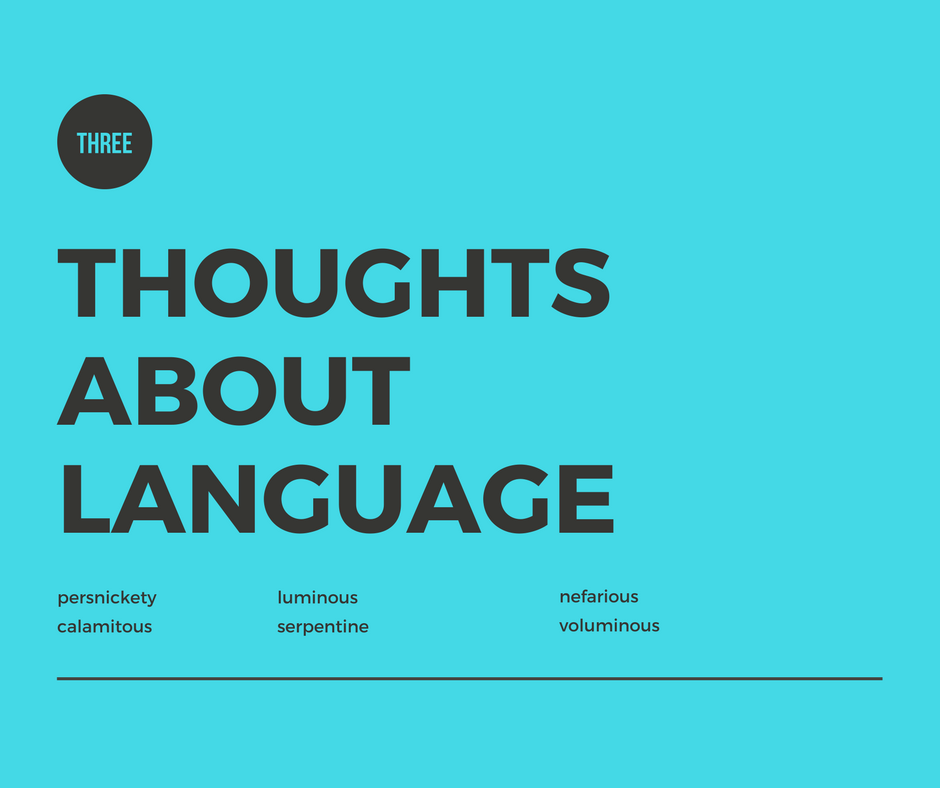
“Human speech is like a cracked kettle on which we tap crude rhythms for bears to dance to, while we long to make music that will melt the stars.”
― Gustave Flaubert, Madame Bovary
“The limits of my language mean the limits of my world.”
― Ludwig Wittgenstein
“If you talk to a man in a language he understand, that goes to his head. If you talk to him in his language, that goes to his heart.”
― Nelson Mandela
by Naomi | Mar 16, 2017 | Creative Life
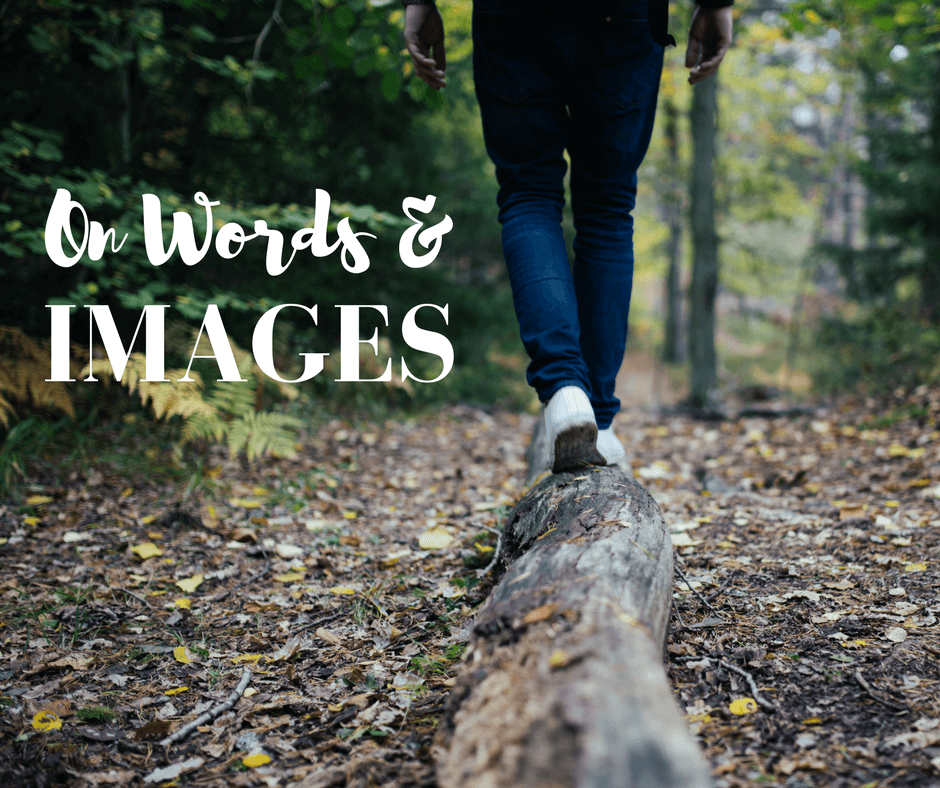
I’ve made a discovery.
You probably made this discovery long before I did, but there’s a reason we say “I couldn’t see the forest for the trees.” Sometimes we’re too close to something to see the big picture.
On the Writerly Play blog, I am writing about developing creativity, and about how story helps us see ourselves and our growth more clearly. Yet, at the heart of every post, whether I’m exploring practical strategies, playful activities or mindset, I’m actually writing about balance.
I’m writing about the space between.
In order for creativity to thrive, we need both structure and play. For instance, story provides a general structure, but playing within that structure makes a story unique, surprising, and engaging.
For the past couple weeks, I’ve been writing about visual literacy. I’ve been making a case for communicating a vision in a visual way. Now, I am swinging the pendulum back the other way in order to explore the power of language. Visual literacy is important, and so is verbal literacy. Both are creative. Both are powerful.
What matters is the balance between the two.
If we decide words ought to be avoided, that infographics are the communication medium of the future, we lose the complexity of beautifully well-crafted sentences. If, on the other hand, we insist on pages of unbroken text when an image would have made our meaning immediately clear, we’ve lost a significant point of connection.
Painting and drawing have been a part of my life since I was young, but my artistic medium, the one that fits just-so, is the medium of words. I love playing around with images, with music, with color and rhythm and yes, balance. But when I need to express an idea, to put it out into the world and share it, I turn to words.
Yesterday, I stumbled across a love letter. You may have already seen it, but if you haven’t, you absolutely must read Amy Krouse Rosenthal’s love letter to her husband. This letter is an exquisite example of the power of language. Reading it, I was reminded of the reason words matter to me so very much. It’s partially because of the way that carefully chosen words communicate. It’s also because our words can be gifts.
Our words have a little bit of magic in them.
Words can change the way a person sees herself or her situation. When her perception changes, her focus changes. Since our experience of life relies so heavily on where we place our attention, this shifting focus can change our life. Literally. And thus, words might as well be magic beans. When the circumstances are right, we can plant them in others’ lives and watch magic grow.
What will you do with your words today?
With my words, I enjoy planting the seeds of one question asked in a thousand different ways. What if we looked at it this way? Or that way? To balance, one must constantly make tiny adjustments. A life well-lived has this element of adjustment in it as well. Fresh perspective asks something of us. A new idea knocks us out of our comfort zone, swinging the pendulum toward the opposite pole. As we swing back and forth, we work at navigating a middle ground. This middle ground isn’t simple. Staying balanced in that space takes active, mindful work. And yet, playing in that tension-filled space, that’s the art of living life well. That active, mindful space is where Writerly Play lives.
I’d love to hear from you, on language, or images, or the space between. Share below, or connect with me on Facebook or Twitter.
With love and creativity!
by Naomi | Mar 13, 2017 | Writerly Play Activities
Visit the Writerly Play Studio and gain fresh perspective on your project with this visual thinking activity. Never heard of the WP Studio? Learn how Writerly Play thinking strategies supercharge your creativity here.
Wondering about your vision for a project, a vacation, a relationship, a character? Try creating a collage! Give your verbal thinking a break and let images lead the way. The answers you stumble across may surprise you.
Try This:
- Grab a stack of old magazines.
- Choose a focusing question for your collage, such as “What do I want my vacation to feel like?”
- Flip through the magazines and tear out any images that speak to you. If words leap off the page at you, tear those out as well, but focus on images first. Don’t forget to consider color, texture and shape. These more abstract elements can add insights to your collage.
- Once you have a pile of images, sort through and start to arrange them into a coherent collage. You may want to go back and look for items that now seem important to round out the idea.
- Use scissors and glue to cut and paste the images onto a thick sheet of paper.
- If you decide you need additional words, go back and find the words, or find letters so you can spell out the words. Or, be creative and create letter forms of your own to layer over your images.
- Once your collage is complete, share it with a friend. When you articulate the meaning behind what you have created, you will become even more aware of what the collage means.
- Before you put the collage away, ask yourself, “What actions might I take, now that I have this insight?” Take advantage of the insights that your playful mind has provided.
Note: I’d highly recommend magazines over a Google search. In a magazine, you’re likely to stumble across an image you’re not expecting, and surprises often lead us to the most compelling insights.
by Naomi | Mar 7, 2017 | Creative Life
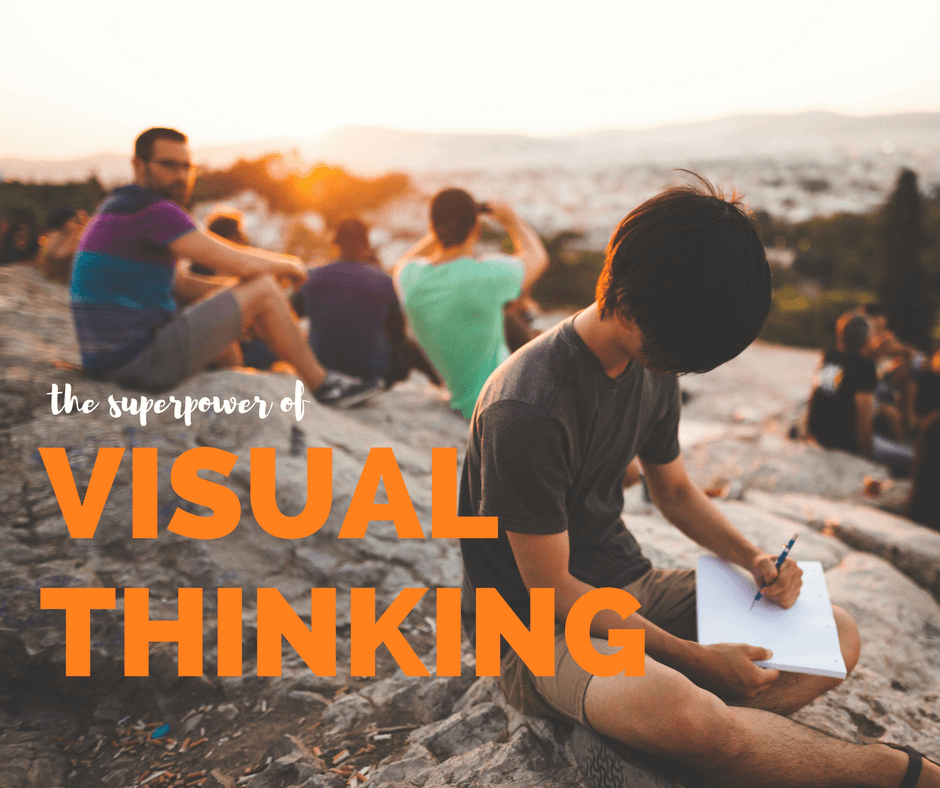
Visual thinking is a superpower that is often:
a. under utilized
or
b. completely ignored
Now, if you’re thinking–Visual thinking is for illustrators or architects, maybe for children, but not for me—stick with me for a moment. Growing up, I’ll bet that you struggled (at least a little) with either letters or numbers. If a teacher had allowed you to give up, saying, “I’m not a math person,” or “I simply can’t read,” you’d have breathed a sigh of relief at the time. But, consider what would have happened if you had opted out of math or reading and writing entirely. We know that the ability to think in numbers or to think in letters is key. However, somewhere along the way, we’ve forgotten the importance of thinking in images. We’ve allowed over half of the adult population to believe untruths such as, “I can’t draw.”
Why is visual thinking important?
Sunni Brown, author of the fantastic book, The Doodle Revolution, puts it this way: “A doodler is connecting neurological pathways with previously disconnected pathways. A doodler is concentrating intently, sifting through information, conscious and otherwise, and–much more often than we realize–generating massive insights.”
Howard Gardner identified visual intelligence as one of many intelligences. Linguistic intelligence and mathematical/logical intelligence are also on that list. It is true that different brains have different strengths. However, the fact that I don’t have a naturally mathematical brain does not negate my need to think and conceptualize in numbers. Linguistic skill is obviously key to my capacity as an author and the Executive Director of a literary nonprofit, but numbers are also a daily part of my work. I’m grateful for teachers who insisted I not give up on numbers simply because I did not have a strong inclination toward them.
The point is, many of us have decided we aren’t comfortable with visual thinking and thus, we’ve dismissed an entire literacy that could have been at our disposal. We’ve dismissed thinking in images because it is for other people or worse, childish. We’ve given ourselves permission to not conceptualize big ideas in sketch form, or via visual metaphor. We’ve limited our capacity for thinking big thoughts because … why? For most of us, it comes down to the ability to draw.
Most adults are afraid to draw.
Somewhere along the way, maybe in elementary school, someone pointed out that our horse didn’t really look like a horse. We noticed that our lines were wavy or our circles were lopsided. We expected ourselves to be photo-realistic artists, and for the most part, we expected this to happen instantly, magically, with no official training or concerted practice.
For the record, in order to think visually, you do NOT have to be an amazing artist. In fact, if you don’t want to, you never have to show your doodles to anyone else. However, I’d strongly, strongly encourage you to take a month and play around with doodling. See what comes out of it, and if you aren’t seeing results after giving it a real try, then let it go. My bet, though, is that you will be a visual thinking convert.
Visual thinking will help you in many ways.
If you’re willing to give this a go, I’d highly recommend your checking out Sunni Brown’s book. She provides research, inspiration for the mindset needed and practical strategies–everything you will need for your experiment. If you need a little nudge, though, here are some reasons why visual thinking will absolutely help you.
- When you draw, you externalize your thinking. We can only focus on a thought for a short amount of time before it is gone. Drawing a concept out on paper allows us to stick with the idea, to follow it where it leads.
- Images tap into figurative thinking. In order to make a concept, say freedom, into an image, we have to answer the question, What does freedom look like? This question, in and of itself, is useful as it brings new thinking to the table. When we nail down abstract thinking into concrete images, we start to see a path between our goal and what it might look like in real life.
- Images communicate quickly. There’s a reason for the explosion of infographics as of late. We can absorb information laid out in a combination of words and images much more quickly than we can read and comprehend long paragraphs (such as the paragraphs that make up this blog post, much to my chagrin)!
Need a tiny extra nudge?
Listen to your language over the next couple weeks. Notice if you use phrases such as, “I can’t see it happening,” or “If I could just see my workload,” or in response to a colleague’s idea, “What will that look like?” These phrases are clues that you are a visual thinker. You want to be able to mentally see something. Though your imagination is a strong tool for doing so, bringing that image out into the physical world will be even more inspirational. What you can imagine, you can draw. What you can draw, you can see. What you can see, you can make practical. And what you can make practical, you can make happen.
What does the superpower of visual thinking accomplish? Visual thinking will help you imagine ideas, see them, and bring them to life. Not too shabby as superpowers go, right?
My challenge to you is this:
Give yourself a month to play around with visual thinking. Use The Doodle Revolution if books help you explore new ideas. If not, simply take out pencil and paper and sketch the next time you’re planning or brainstorming. Conceptualize with a combination of words and images. Even when you don’t have pencil and paper in hand, play the “What does that look like?” game. Picture concepts such as creativity or hope in image form. Then, once you’ve played around, come back and share what you’ve noticed or learned. Or share with me on Facebook or Twitter. Let’s learn together! I can’t wait to chat with you. As you can probably tell, this is a subject of intense passion for me.
Here’s to you and your creative insights!
by Naomi | Mar 2, 2017 | Creative Life
Creativity often shows up at the intersection of various thoughts. Here are three on the intersection between words, images, and thought … how do you use visual thinking in your creative process?
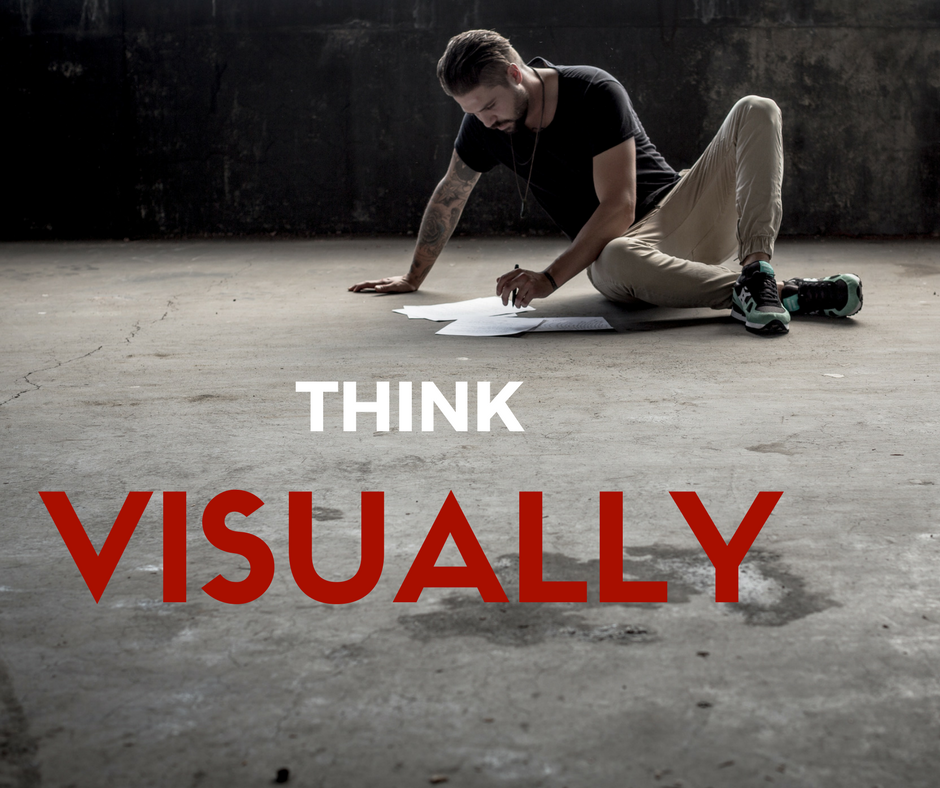
“Writing is the painting of the voice.” – Voltaire
“I love the interplay between words and pictures. I love the fact that in comics, your pictures are acting like words, presenting themselves to be read.” – Gene Luen Yang
“I use doodling for a variety of reasons: I use it to get clarity around a concept, I use it to relax, I use it to communicate ideas with others and get their refinement of them, I use it to map complex systems for companies, I use it to run innovation games for business, I use it to get insight on something puzzling me.” – Sunni Brown
by Naomi | Feb 27, 2017 | Book Reviews
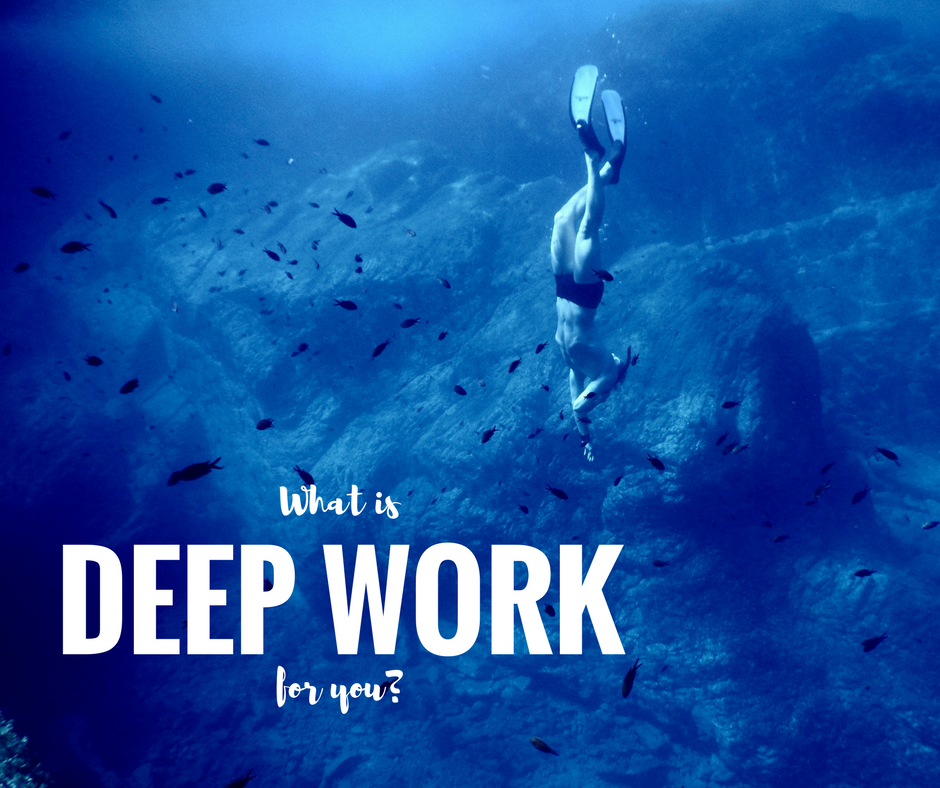
As I’ve been thinking about heart, and how my heart shows up in my work, I picked up Cal Newport’s book: Deep Work.
What I love about this book is that Cal doesn’t simply tell us that we need to focus on the things that matter (a truth that is clear to most of us), but he also discusses what focus looks like, and practical ways to build our mental capacity for focus.
Cal defines deep work as “the ability to focus without distraction on a cognitively demanding task.” Deep Work leads to a sense of joy and meaning in our lives because we learn to focus on what matters and let go of the more shallow concerns that otherwise might consume us.
Deep Work lives to an improved life. Cal says: “Like fingers pointing to the moon, other diverse disciplines from anthropology to education, behavioral economics to family counseling, similarly suggest that the skillful management of attention is the sine qua non of the good life and the key to improving virtually every aspect of your experience.”
He also points out that when we spend our time in our inboxes, we tend to focus on the irritating small issues of life. It isn’t that we shouldn’t pay attention to our community and the things they may need from us, more that we should make sure our best attention goes to those few projects that really tap into the most meaningful use of our unique capabilities.
Cal says, “Who you are, what you think, feel, and do, what you love—is the sum of what you focus on.” When we focus on work that challenges us to work at our highest intellectual capacity, we gain a sense of significance. He points out that most knowledge workers are engaged in vague tasks that yield vague and hard to measure results. No wonder we have a hard time knowing whether what we do matters. By determining what deep work is for us, and by building the mental discipline needed to engage in deep work, we not only are able to give more to the world around us, but are more satisfied, settled and joyful in our lives.
Results well worth working hard for, no?
If you’re exploring how to bring your heart into your work and looking for practical strategies, Deep Work will be a compelling read for you.
by Naomi | Feb 23, 2017 | Creative Life
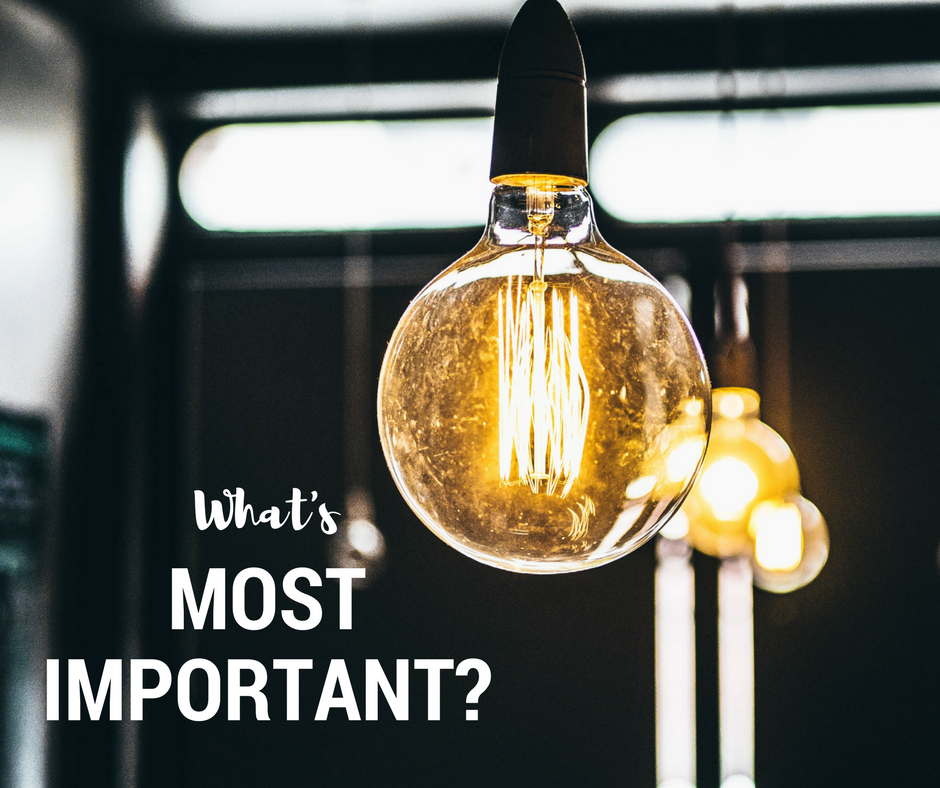
What is at the heart of my life? How does that relate to what’s at the heart of my work? I’ve been exploring the theme of heart here at the Writerly Play blog these past couple weeks. Like many meaningful questions, I’ve found these two to be both more complex and more simple than they seem at first glance. Essentialism by Greg McKeown takes these questions to a deeper level and challenges me to think hard about what truly matters most.
Take a moment and ask yourself: What’s most important to me?
If you’re anything like me, this exercise turns into a stream of “ands.” This and this, oh, and this … and on and on it goes. Which leads me to ask: What do I get rid of? That’s where the complexity comes in. Nearly all of the items on that “important” list are good things. Many of them are great, meaningful things. Saying no isn’t only difficult, sometimes its even painful.
If saying no is painful, why should we do it?
I first read Essentialism by Greg McKeown a couple years ago. I remember being highly attracted to the idea of less, while also holding tightly to my list of everything that’s important. Sure, I thought. I can let go of that, but not this. Or this. Or this. I made some tough decisions and made some progress, but only on the surface level. I held tight to many things that I now see I could have let go.
Say we are a flashlight and our energy is our light. When we choose to shine our light here and there and everywhere, our progress is bound to be slow. To keep things simple, let’s say we chose to keep track of three objects in the dark forest with our light, rather than five. Now, we’re much more likely to not lose any of them. And if we can choose just the one, straight ahead … so much the better.
Saying no to some things means giving a more whole-hearted yes to others.
If we’re being honest, most of us can’t limit our focus to one thing. We have family and friends, bills to pay, meaningful work to do, and our physical, emotional, spiritual and creative health to consider. However, this reality is all the more reason to be careful about saying yes. Some questions to consider include:
- Is this essential?
- If so, is this essential right now?
- Am I using the right approach, or might I achieve the same outcome in a more effective way?
Learning to focus is a process, not a one-time change.
This week, Donald Miller interviewed Greg McKeown on the Storybrand podcast. I was relieved to hear that even for Greg, Essentialism has been a process. It’s a discipline, a practice, a lifelong pursuit. There’s hope!
Even a brief pause in the frenetic momentum of my life allowed me to see that one project that has dominated my to-do list recently is probably not the highest use of me. While it’s an important project, there is opportunity to involve others in the project and make the work–and the connections that come from the work–more meaningful to a larger group of people.
I was excited to see that Greg put together a 21-day challenge to make the pursuit of Essentialism practical and approachable. As you surely know by now, I love practical strategies! I highly recommend the podcast and the corresponding cheat sheet.
If you do listen to the podcast, I’d love to hear what insights show up for you! I learn so much by viewing creative challenges through alternate perspectives. Feel free to post your thoughts below, or tag me on social media. You can find me on Facebook and Twitter.
Here’s to you and your creative heart!
by Naomi | Feb 20, 2017 | Creative Life
Visit the Writerly Play Attic and work through a step-by-step activity to develop your courage. Never heard of the WP Attic? Learn how Writerly Play thinking strategies supercharge your creativity here.
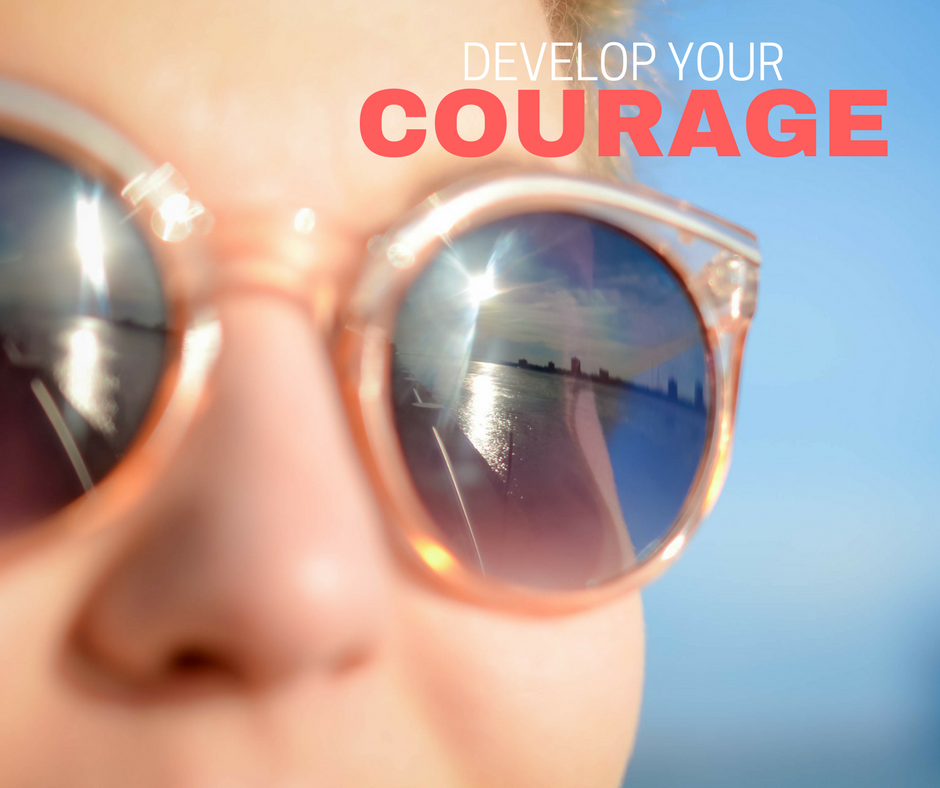
I used to think fear was a weakness. I thought that maturity meant moving beyond fear. Whenever I felt fear, I switched into doubt-myself mode, consulting everyone around me for advice. If a person appeared fearless, I assumed they were also an expert.
It took me a long time to realize a number of important things:
- Just because someone appears fearless doesn’t mean they are.
- Innovators live outside their comfort zone, which means they face fear on a regular basis.
- Fear isn’t rooted in a lack of knowledge, courage, or capacity.
- If someone doesn’t feel fear now and then, she likely isn’t truly stretching herself.
- When I push into and beyond my fear, I’m doing my job. I’m being a confident, capable leader.
When I was younger, I’d do a small, daring thing and feel slightly smug. Fear? Whatever. I’ve got this. Now, I’ve learned fear comes in many sizes. If I’m a tad anxious about doing a live video session, but I shrug my concern off and go for it, I’ve done a good thing, sure. But pushing past larger-scale fear usually costs more than momentary discomfort.
For instance, now that I’m running a non-profit organization, the stakes are high. If someone asks me, “Are you sure that new program will work?” answering, “Let’s give it our best try,” feels like walking onto a tightrope with no safety net. Taking steps forward means risking relationships, our reputation, and even putting people’s jobs on the line.
It’s important to calculate our risk-taking and to make wise decisions. However, I’ve learned that caution can lead to disaster, too. Too much caution can result in completely missed opportunities.
So, what are the practical steps to take to develop your courage?
1. Identify the challenge. Spend time exploring the actual situation and possible goal.
Here’s an example. Like many artists, I wrestle with how to make a living while staying true to my creative heart. It’s easy to make a snap decision about what I need to do. “If I win the Newberry, I’ll have it made!”
The trouble is, my snap-decision solutions tend to be out of my control and beyond my current reach. They create road-blocks rather than forward momentum. So, instead, what if I ask myself: What is my actual goal? Or, if that question doesn’t yield a helpful answer, I might ask: What might success look like?
Or if all else fails, I might ask myself a series of “why” questions:
“Why do I want to win the Newbery?”
“Because teachers will invite me to visit their classrooms to work with their young writers.”
“Why do I want to work with young writers?”
“Because I want to create meaningful experiences for kids who are like the kid I was …”
“Why else?”
“Because I can make a living being creative and also make a difference in the world.”
And, wha-la! I’ve landed at the heart of things.
2. Focus on a proactive question. Start with the question at the heart of your challenge and brainstorm solutions.
Our brains are like computers. When we put a question in, they go to work to solve the question we’ve asked. If we ask a proactive, expansive question, we are much more likely to end up with a workable solution.
In my case, I’d ask: How can I make a living being creative and also make a difference in the world? In the end, my solution may involve writing Newberry-worthy books and working with young writers. But, the landscape also opens up for other possibilities as well. No matter what, by asking a more open question, I’m more likely to find a solution that will work *right now* to keep me in motion toward those life-long dreams.
3. Choose a solution. Take the time you need to research, ask for advice, and review pros and cons. Then, make a firm decision.
When we’re afraid, we fuss and fret and keep our options open. However, solving a problem by moving in twenty directions won’t yield strong results. When we water down our efforts, we water down our progress. Once you’ve chosen a solution, give it an honest chance. Focus your effort on your plan and boldly go for it.
4. Start. Begin with the first possible action.
By starting with the first possible action, you avoid the procrastination that comes from exploring additional options, researching, fretting, planning, and generally over-preparing. No amount of pre-thinking will keep you from running into unexpected challenges. There is no perfect way to roll out your solution. So, since the process is going to be messy, you might as well start, right?
5. Keep moving. Keep taking the next obvious step, one after the other.
That’s it! This strategy may look straightforward and practical, but it is by no means easy. Expect detours and sink-holes. Be prepared to turn a corner only to run straight into fear yet again. Instead of running, reach out your hand. Invite fear to come along as you *keep moving*.
Many of you are facing your fear as we speak.
You’re pushing forward into the unknown creatively, personally, professionally. If that’s you, I want to say … I’m tremendously excited for you. I can’t wait to see what beautiful things you bring into the world because of your courage and determination. I’m excited for those of you who are about to tackle your fear, too.
I’ll be here, cheering you on, so don’t forget to share your progress with me. Not just the wins, either. I want to hear your story—the ups AND the downs. You can always share with me on the blog, or you can email me and tell me your story. Or, connect with me on Instagram or Twitter. Your story matters.
Here’s to you and your courageous heart.





